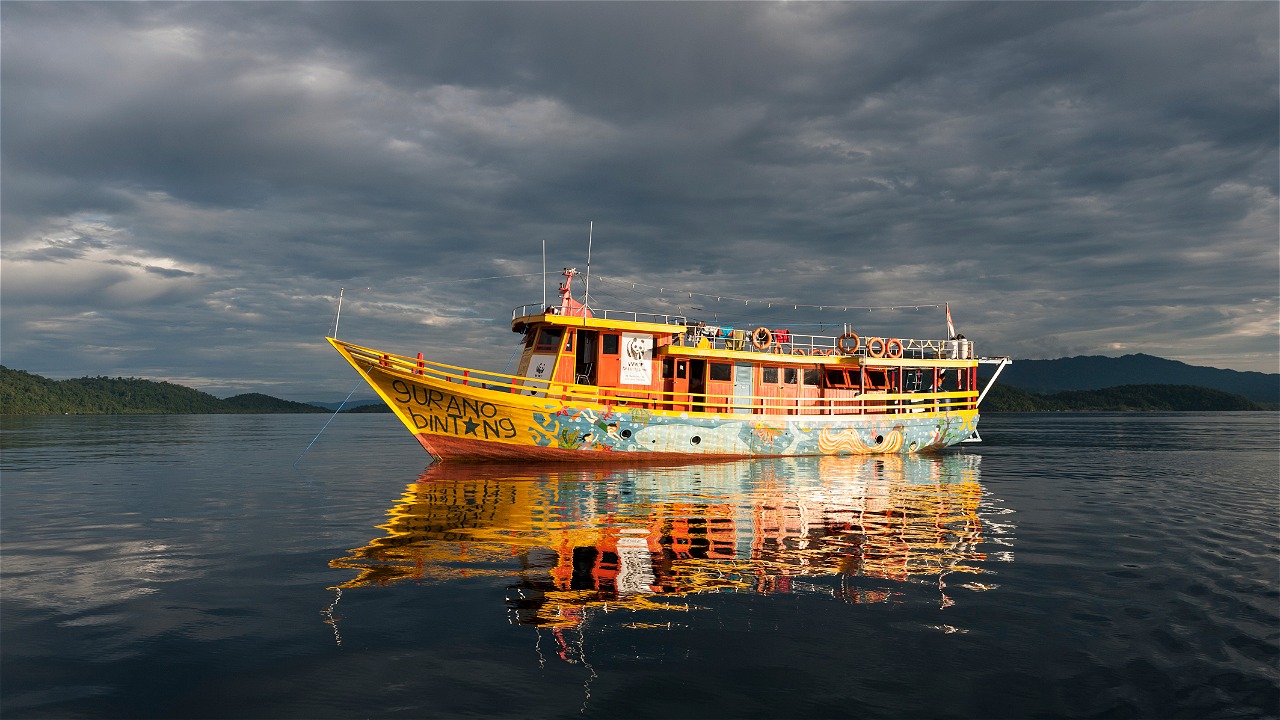KM GURANO BINTANG JOURNEY IN AISANDAMI VILLAGE
By: Feronika Manohas
Until now, several natural resource management concepts have been initiated in several TNTC coastal villages. Starting from adopting one form of local wisdom to combining it into written rules that apply to the community. A total of 44 residents in Aisandami village, Teluk Duairi District, Wondama Regency, who play a role as fishermen were involved in identifying locations that are feasible to regulate the utilization mechanism through Focus Group Discussions or discussions with several community leaders.
The results of the village level discussion found that almost all locations of Aisandami village waters are fishing areas for local communities and communities outside the village with an area of community utilization of 8,689.95 Ha. Where the biota utilized are generally various types of grouper, bubara, darisi, sea cucumber and lobster. Usually the fishermen use nylon and hooks, nets, kalawai and akarbore as fishing gear.
The fish caught are generally consumed and sold to buyers who enter Aisandami village. The fishermen race to take as many fish as possible when buyers arrive. This can reduce the quality of resources at the fishing site.
Knowing TNTC's Coastal Area with Indigenous People
Through mapping, we can know the important places in the sea and the location of sasi candidates with an area of 237.693 Ha or about 3% of the community's catchment area that will be temporarily closed in turn. The sasi closure plan will be conducted in January 2016 involving all natural resource users in Teluk Duairi District. However, if overlaid with zoning regulations, the sasi plan of the Aisandami village community is allocated marine protection. So it is necessary to continue discussions with the TNTC management authority (BBTNTC) so that there is no overlapping management.
Aisandami village community efforts to restore their natural life have been carried out both by making local rules to enforcing rules that refer to existing government regulations. However, this is still lacking and needs the involvement of the parties to the management of existing natural resources, namely:
- Need support from the local government and TNTC to the police to take action against environmental destroyers both from within the village and those who steal secretly.
- Facilitate community groups in enforcing their village rules, namely with facilities and infrastructure for community SDA monitoring (POKMASWAS)
- Increase community training and mentoring in developing creative economic activities for women's and men's groups
- Setting the direction of development and implementing it from district to villages
- Prioritizing the development of productive businesses towards the utilization of sustainable fisheries and ecotourism
- Improve the quality of education by developing educational methods for sustainable development.
In the future, if these various things can be developed where local rules go hand in hand with positive rules, natural resources can be utilized wisely and continue to be available for the future.





